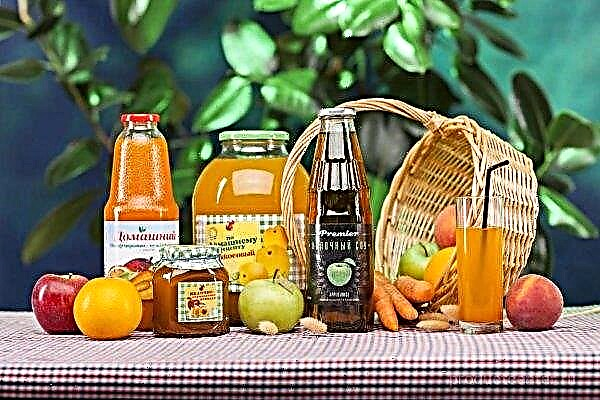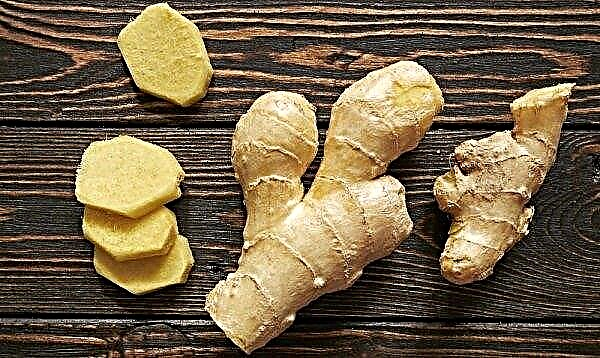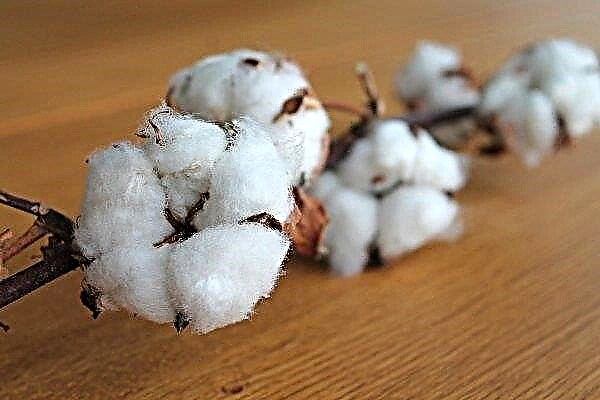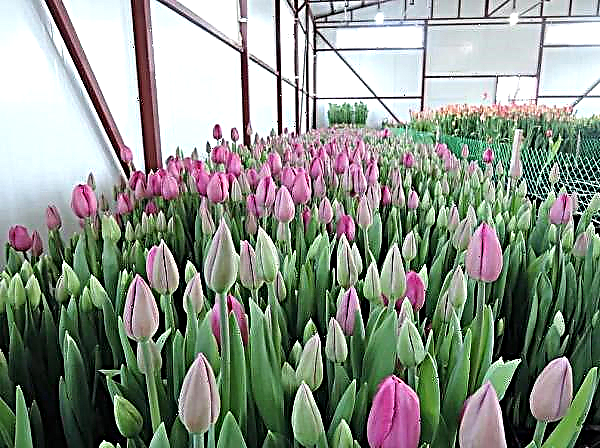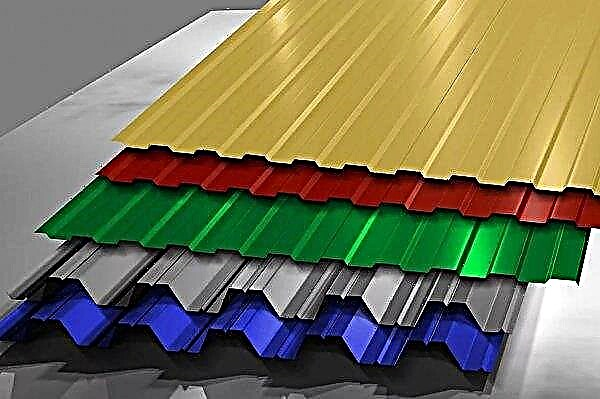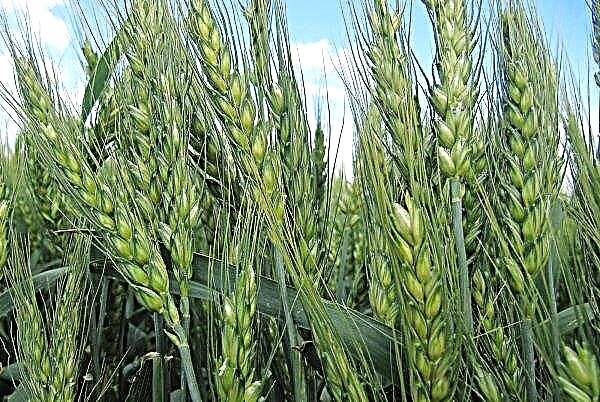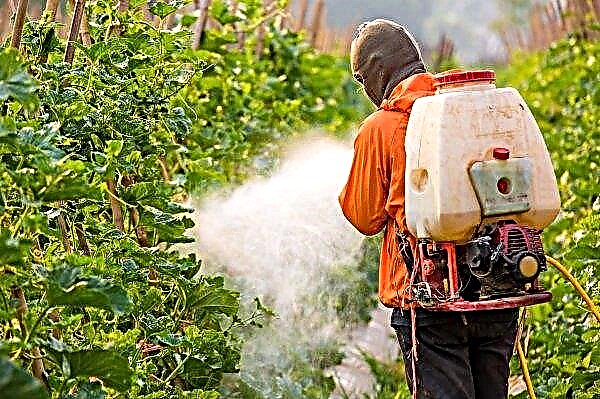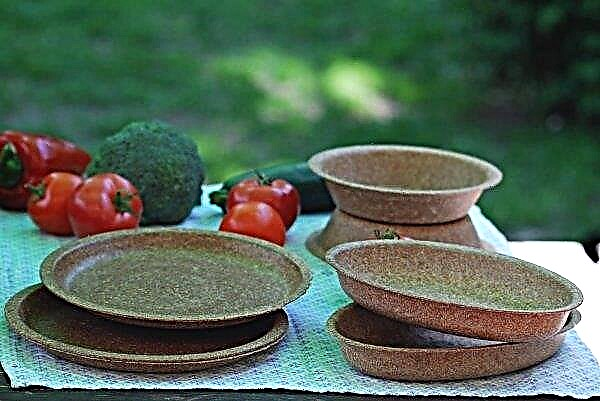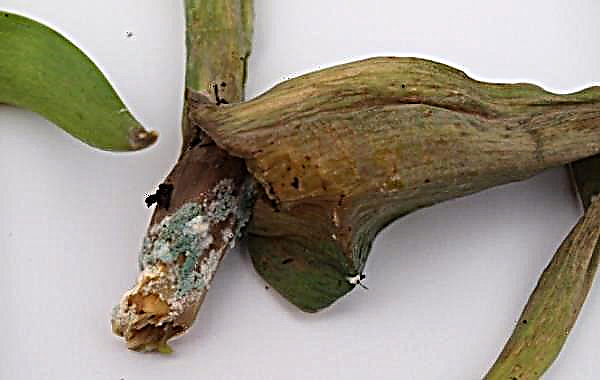On the planet, there is an unthinkable number of species of mushrooms, which so far have not been able to calculate by scientists. Among them, edible varieties occupy a significant share - of them prepare delicious dishes and medicines. Among these is the sub-species - a mushroom of the Syroezhkov family. In Western countries, it is considered a real delicacy, and in Russia it is little known, although it definitely deserves the attention of mushroom pickers.
Mushroom description
If you are a beginner mushroom picker, before you go on a “hunt” for an undergrowth, you should carefully read the description and photos so as not to accidentally confuse it with other, dangerous representatives. At first glance, it looks quite ordinary, but with close examination, some features can be distinguished.
What does it look like
The undergrowth is a relatively small mushroom, reaching a maximum height of about 12 cm. It is not so easy to find in the forest, as the color often merges with the surrounding area. Looking at the photo, it can be seen that the mushroom has a dry, fleshy hat 5–15 cm in diameter. Its shape differs among young and adult representatives: at first it is convex, has a small tubercle in the middle, and for old mushrooms it is open with a dented center.
The edges of the cap are initially turned up, but straighten and thin out with age. Color ranges from red-yellow to brown-red. In some regions, the mushroom is also called silver ear, as its hat has a grayer shade. The leg is thick, sometimes its diameter reaches 4 cm, has a cylindrical shape, even or slightly swollen. Leg height 4–10 cm. In young mushrooms, it is fleshy, but becomes hollow with age. To the touch - velvety, smooth. The color of the legs is most often similar to a hat, but a little lighter.
The pulp is dense, but when damaged quickly breaks, has a sweetish flavor. Another name for the undergrowth is the milk plate (euphorbia, molokanka). This is what they call it due to the fact that when it is cut, it releases milky juice - a white sticky liquid that, when exposed to air, changes color to brown. The inside of the hat is covered with yellowish or white-pink plates that darken from touch or damage.
Where is growing
The fungus got its name from the main place of growth - most often it can be found in woodlands with walnut and oak thickets. It prefers moist mossy places, rotten stumps, where it can grow both in groups and individually.
In Russia, it is found in the middle and southern strip. The fungus forms mycorrhiza with conifers and deciduous representatives of tree species such as walnut, hazel, oak, less often spruce. The undergrowth gravitates more toward the southern territories, where fruiting begins already in early July and continues until the end of October.
 Do not collect undergrowths near highways, industrial enterprises and in places where waste is dumped, since mushrooms are able to absorb toxins.
Do not collect undergrowths near highways, industrial enterprises and in places where waste is dumped, since mushrooms are able to absorb toxins.
Edible or not
Podmolochnik (undergrowth) refers to edible mushrooms. It can well be eaten, but only after cooking for 15 minutes. Used as an independent dish or as an ingredient for the preparation of more complex recipes. One of the virtues of the adolescent is that it is never wormy.
Varieties and doubles
Pvirtually all fungi in nature have twins. The undergrowth is no exception. In addition to the fact that it has varieties, similar mushrooms can be found in the forest. Some of them are also edible, and some can harm the body, cause severe poisoning.
So, sub-milkman can be confused with such mushrooms as:
From a distance, mushroom pickers sometimes confuse the undergrowth with the usual saffron mushroom, but upon closer inspection it is already noticeable that the mushroom has a bright red hat with dark-colored centric circles. You should not be afraid of it, since saffron mushroom belongs to edible mushrooms, has a pleasant taste and aroma.
Growing
Today, growing mushrooms in their own beds is very popular among gardeners. In addition to the well-known champignons and oyster mushrooms, people have successfully learned to plant other species, such as porcini mushrooms, honey mushrooms, etc. The undergrowth can also be grown at home. True, it is worth noting that the first time a positive result may not be so effective, since the yield and quality of mushrooms largely depend on natural conditions, the correct planting and care.
But, if you “get your hand” over time, then you can collect a decent harvest without climbing into the forest jungle. To grow an undergrowth on the site, you will need to purchase powdered mycelium. It is usually sold in packages of 1 m².
Did you know? The fungus’s body is considered to be mycelium, which extends in the earth at a great distance, and the fungus itself — it is just his fruit.
Before sowing it is mixed with 0.5 kg of dry soil or sand.. For planting, you need to select a site near any tree, dig the ground to a depth of about 10 cm, forming a small depression in the surface. Now you need to evenly sprinkle the mycelium. Top planting should be sprinkled with a layer of ordinary garden soil mixed with humus in equal proportions. The bed is watered at the rate of 10 liters of water per 1 m².
Planting should be watered in dry periods, delivering 15–20 l of settled water per 1 m². The first mushrooms appear 2.5 months after planting. The crop will be relatively poor - about 500 g per 1 m². In the future, the garden will yield 4 times a year - 2 times in the fall and 2 times in the spring, delighting its owners with 3-4 kg of fresh tasty mushrooms.

In the intervals between the growth of mushrooms, the earth needs to be fertilized with humus, pouring on top of about 15 kg per 1 m². The mushroom picker will bear fruit as long as the tree will live, near which it is located, that is, the period can be calculated in years.
Mushroom benefits
Undergrowth is not only tasty, but also a healthy mushroom. To evaluate its healing properties, it is enough to consider the features of the chemical composition. The pulp contains a lot of biologically active substances that have a positive effect on the human body.
Important! Mothwort has no effect on blood sugar, so it can be used by people with diabetes.
- In particular, it contains elements such as:
- vitamins of groups A, B, C, PP, D - improve immunity, play an important role in the metabolism, reduce the feeling of fatigue, slow down the aging process;
- sterols - interfere with the absorption of cholesterol in the blood;
- cortisol - stabilizes blood pressure, is responsible for maintaining normal glucose levels, causes an adaptive state during stress;
- free amino acids - stimulate the secret activity of the gastric glands;
- tryptophan - the hormone "good mood" eliminates depression, fatigue, drowsiness, and improves the functions of the digestive system;
- arginine - provides oxygen transportation to the heart, improves vascular cell function, prevents atherosclerosis;
- chitin - favorably affects the digestion process;
- tyrosine - a natural antidepressant, increases stamina, normalizes metabolism, relieves headaches;
- phosphorus - participates in the process of preserving genetic information, is a building material for teeth and bones, a source of energy;
- calcium - improves the structure of nuclei and cell membranes, affects blood coagulation;
- potassium - supports the work of the heart and blood vessels, accelerates the growth of muscle tissue, helps to remove toxins from the body;
- sodium - normalizes the functioning of the kidneys, maintains a water-salt balance;
- iron - participates in the transport of oxygen to tissues, organs and systems.

The mushroom is low-calorie (100 g contains only about 20 kcal), is able to accelerate metabolic processes in the body, and in its nutritional value serves as a complete substitute for meat, therefore it is often included in the diet of athletes, supporters of proper nutrition, and vegetarians. The use of the sublingual is recommended for colds and as their prevention, as the product strengthens the body's immune system.
Did you know? Mushroom waste is a good stimulant for plant growth. The water in which the mushrooms were washed can be used to water the beds.
Cooking Application
Aspen, as noted earlier, is an edible fungus that can be consumed after preliminary cooking. Immediately after harvesting, the fruits should be cleaned of damaged areas and washed well. You can soak in water for 30 minutes to completely clear the surface of dirt and sand. Mushrooms are delicious in any form. From them you can cook delicious roast, julienne and even simply fry with onions - such a dish will also be very tasty.
For those who have not tried the tinnitus, we recommend using the following simple cooking recipes:
- Pickled undergrowths. Dip the fresh peeled undergrowth in boiling water and cook for 5 minutes, remove from heat, drain the water. Put them again in the pan and cook for another 10 minutes, then drain the water again, and put the mushrooms in jars. Prepare the brine: add salt (2.5 tbsp.) To water (2.5 l), 8-10 cloves of garlic, 1 tsp. black pepper peas, 7 tbsp. vinegar, mix, boil for 5 minutes. Pour mushrooms with the resulting brine and roll up.

- Mushroom soup. Put pre-boiled undergrowths into a pan with vegetable oil and lightly fry. Add chopped onions and grated carrots here, continue cooking until golden brown. Pour the resulting mass into a pan with water (you can use chicken broth), add diced potatoes, salt and cook for 30 minutes. At the end of cooking, season with chopped greens.
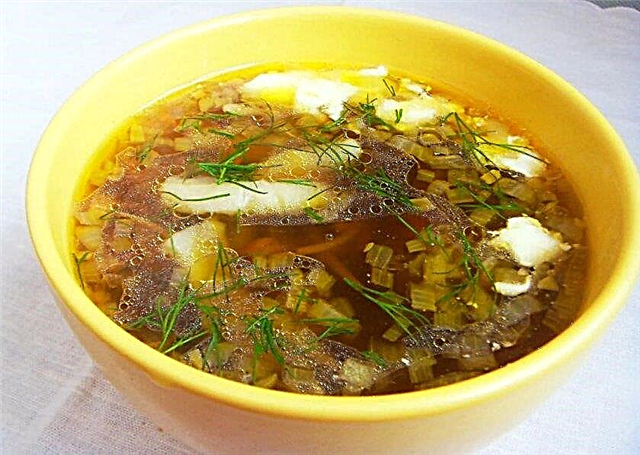
- Spaghetti with mushrooms. Fry finely chopped onions in a pan until transparent. Attach to it chopped, pre-boiled undergrowths, salt, pepper. Cook for 15 minutes. Add the diced tomatoes and keep on fire for another 5–7 minutes. Separately, boil spaghetti in salted water and add to the pan with dressing, mix and warm for 2-3 minutes. If desired, the dish can be sprinkled with cheese, herbs.

Medical use
Due to the large accumulation of useful substances, the sub-milkman has found application in medicine. In particular, it is used to make drugs that prevent the development of rheumatism and inflammation. For people suffering from cancer, traditional healers recommend rubbing the tumor site with fresh mushrooms.
The most commonly used tincture from the arethmus. It is an effective tool in the treatment of ailments associated with varicose veins, varicose veins, hemorrhoids. It is also useful to drink it for colds, tonsillitis, otitis media. To make a remedy, fresh mushrooms are washed, cut into small pieces, put in a liter jar and poured vodka to the brim. Capacity put in a dark cool place for 15 days. Then the product is filtered and stored in the refrigerator. Take tincture twice a day for 1 tsp.
Juvenile juice is used to treat ulcers and acute gastritis. It is not difficult to cook it: you need to twist the freshly picked undergrowths (peeled and washed) in a meat grinder and put on a small fire to stew in its own juice, which will stand out when grinding (if it is small, you can add a little water). After 20 minutes, turn off the heat, allow the product to cool, and then strain, squeezing the mushrooms well. Juice should be taken three times a day for 1 tsp.

Mushroom danger
The undergrowth, like all mushrooms, is considered a rather heavy product that is difficult to digest by the body. For absolutely healthy people, it is safe, on the contrary, with moderate intake, not more than 3 times a week, the undergrowth helps to cleanse the body of cholesterol and toxins. Contraindications apply to people suffering from disorders of the gastrointestinal tract - they are strictly not recommended to use these plants.
You should also not give mushrooms to children in any form - their digestive system is still very weak to cope with such products. Stop the use of mushrooms need pregnant women, as well as nursing mothers.

Summing up, we can conclude that the undergrowth is a tasty and healthy mushroom, from which you can cook a variety of dishes and remedies. Remember that everything is good in moderation and do not abuse mushrooms, even if they are so tasty that it is difficult to stop.





